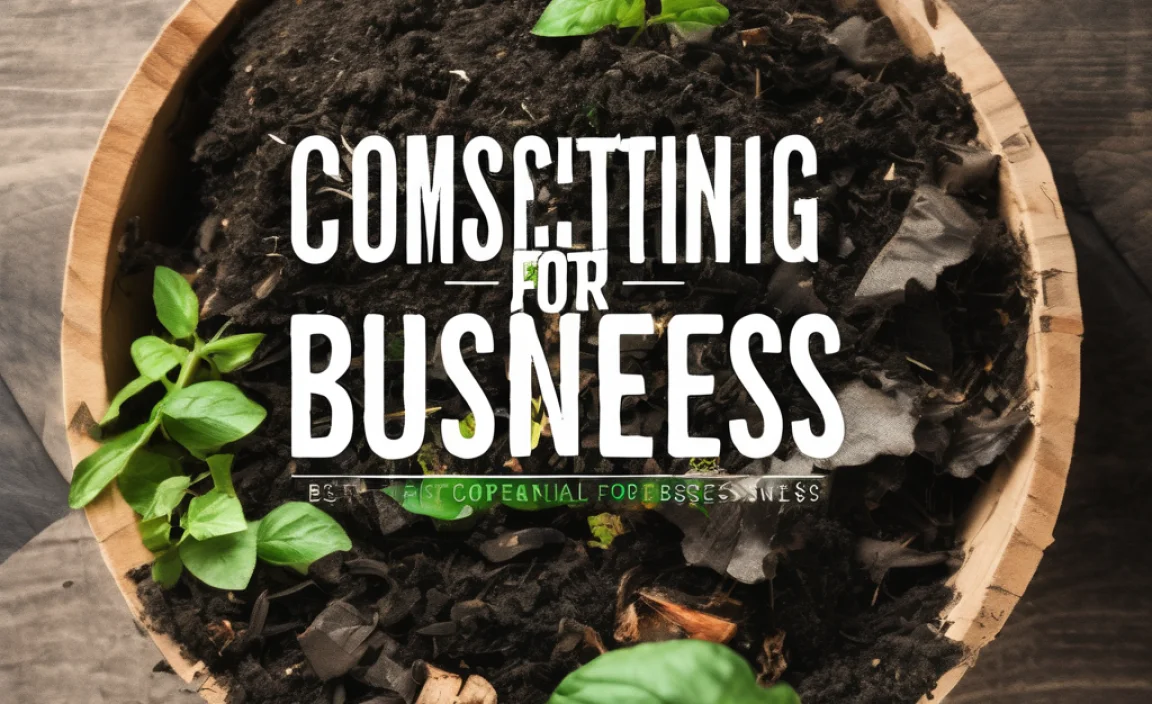Want a thriving garden without breaking the bank? Composting is a fantastic way to feed your plants and your soil, and the “lasagna” method makes it simple and affordable. If you’ve ever looked at your compost pile and felt a bit overwhelmed, you’re in the right place!
We’ll break down this layering technique into easy steps. You’ll learn exactly what you need and how to layer it for amazing results. Get ready to turn your kitchen scraps and yard waste into black gold for your garden!
Why Choose Lasagna Composting?
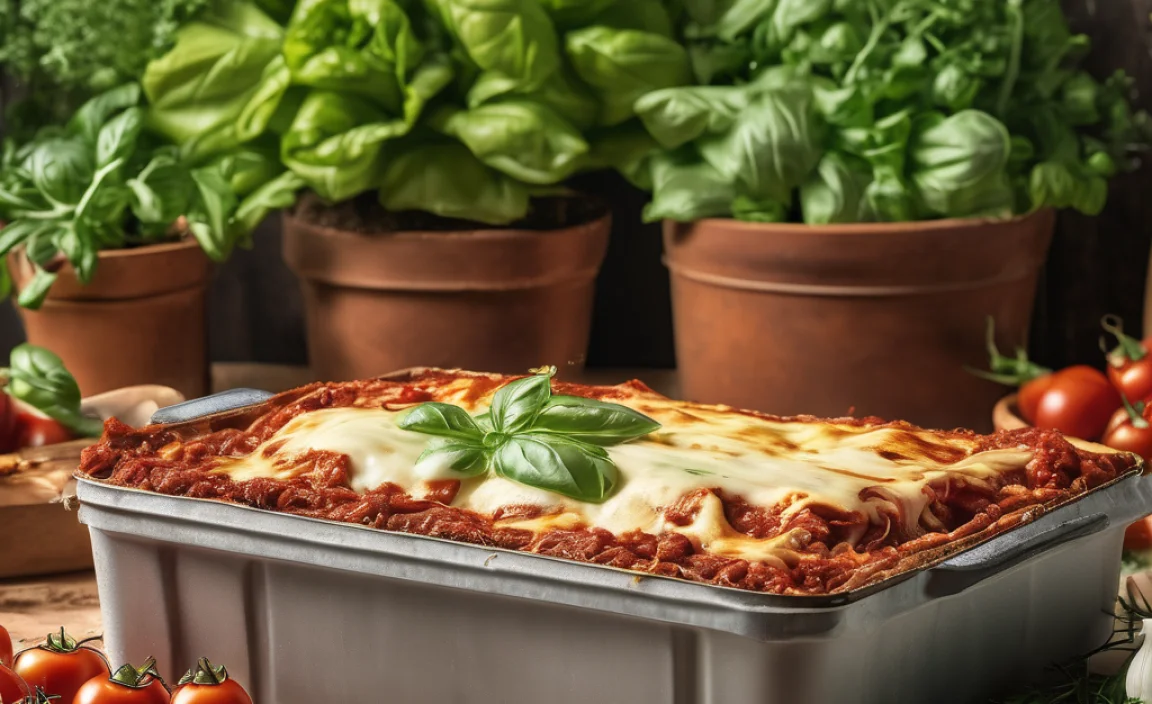
Lasagna composting, also known as sheet composting or no-dig composting, is a brilliant way to build healthy soil right in your garden beds. Instead of a separate bin, you layer organic materials directly where you want your plants to grow, or in a designated bed. It mimics nature’s process of decomposition, creating a rich, nutrient-filled compost over time.
The “affordable” part is key here. You’re essentially recycling materials you already have or can get for free. Think about it: your kitchen scraps, fallen leaves, grass clippings, and even shredded cardboard can all become valuable compost. This saves you money on buying soil amendments and fertilizers, and it’s great for the environment too!
The “Browning” and “Greening” Basics
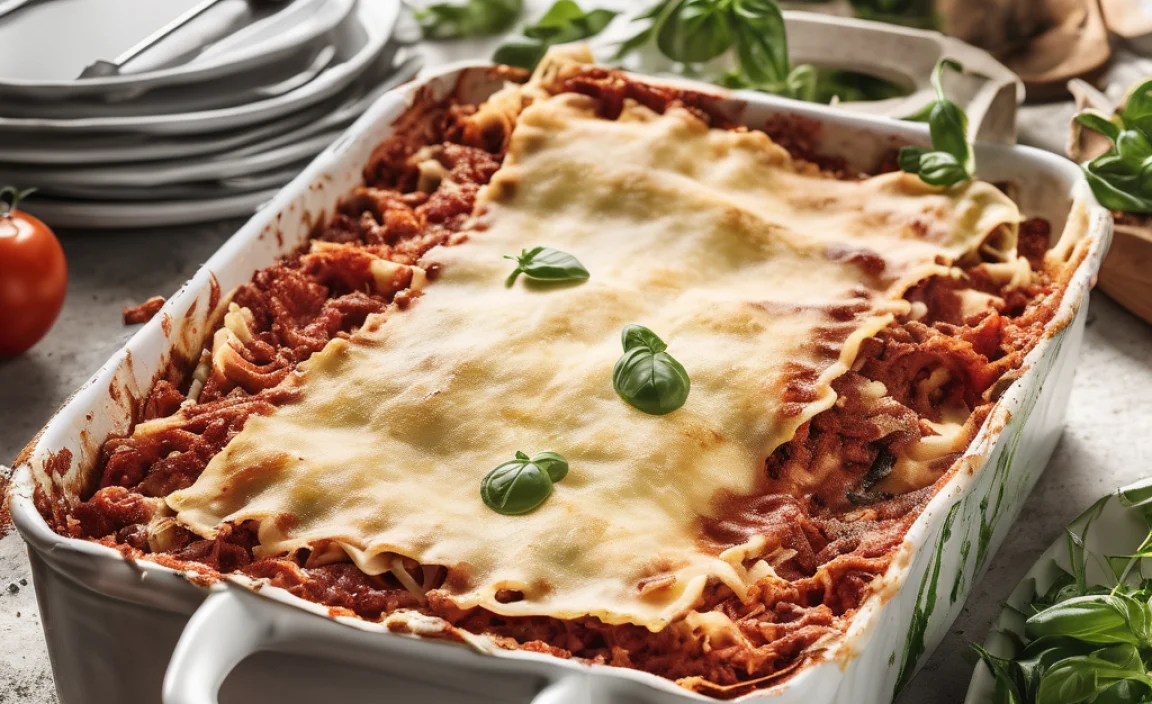
Just like a good lasagna needs layers of pasta, sauce, and cheese, compost needs layers of different materials. In composting, we talk about “browns” and “greens.” Understanding this is the first secret to successful, affordable lasagna composting.
- Browns (Carbon-Rich): These are dry materials that provide carbon. They act like the energy source for your compost microbes. Think of them as the structural component, allowing air to circulate.
- Greens (Nitrogen-Rich): These are moist, nitrogen-rich materials. They provide the protein that helps the microbes multiply and heat up the pile.
Too many browns, and your compost might break down very slowly. Too many greens, and it can get slimy and smelly. The lasagna method helps you balance these layers automatically!
What You’ll Need for Affordable Lasagna Composting
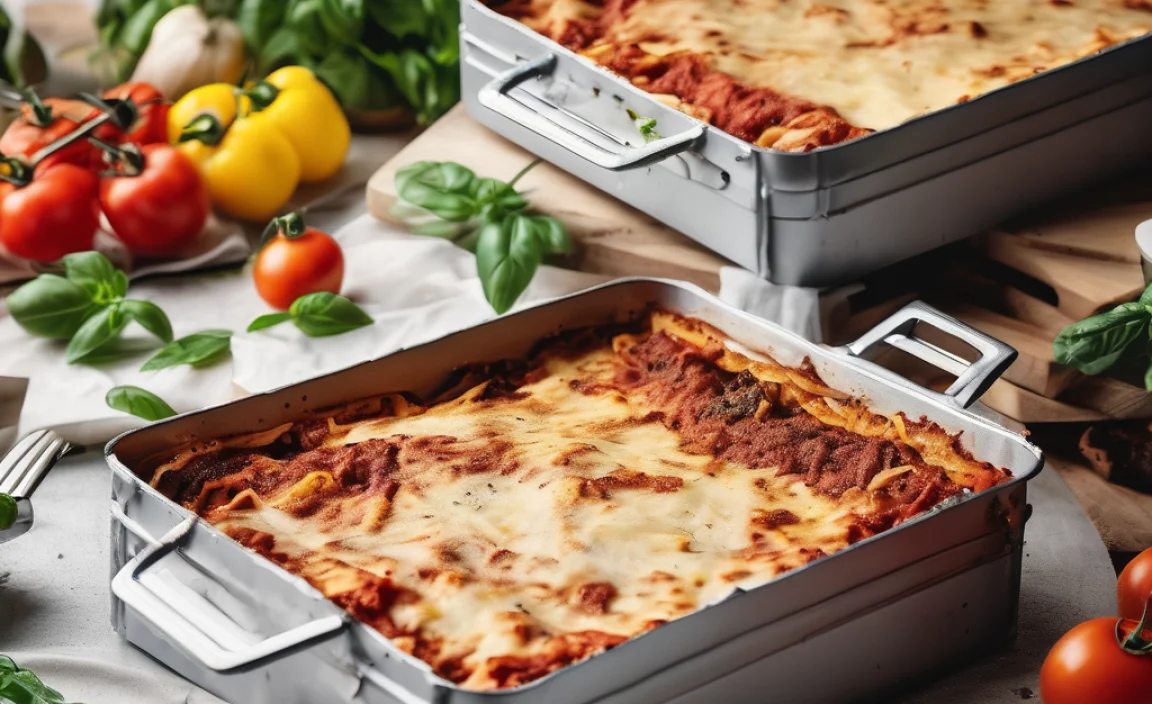
The beauty of this method is its low barrier to entry. You likely have most of these items already!
Essential Materials:
- “Brown” Materials: Dried leaves, straw, shredded newspaper or cardboard (plain, no glossy print or tape), sawdust (from untreated wood only), small twigs and branches.
- “Green” Materials: Vegetable and fruit scraps from the kitchen, coffee grounds and tea bags, grass clippings (use in moderation), eggshells, plant trimmings (no diseased plants).
- Optional: A garden fork or shovel for turning (though not strictly necessary for this method), a hose or watering can.
Tools (Keep it Simple!):
- A Designated Area: This could be right on top of an existing garden bed you’re preparing for the next season, or a specific spot in your yard. No need for fancy bins!
- A Shovel or Pitchfork: Useful for moving materials around.
- Gloves: Optional, but recommended for handling materials.
- Water Source: A hose or watering can.
Step-by-Step: Building Your Lasagna Garden
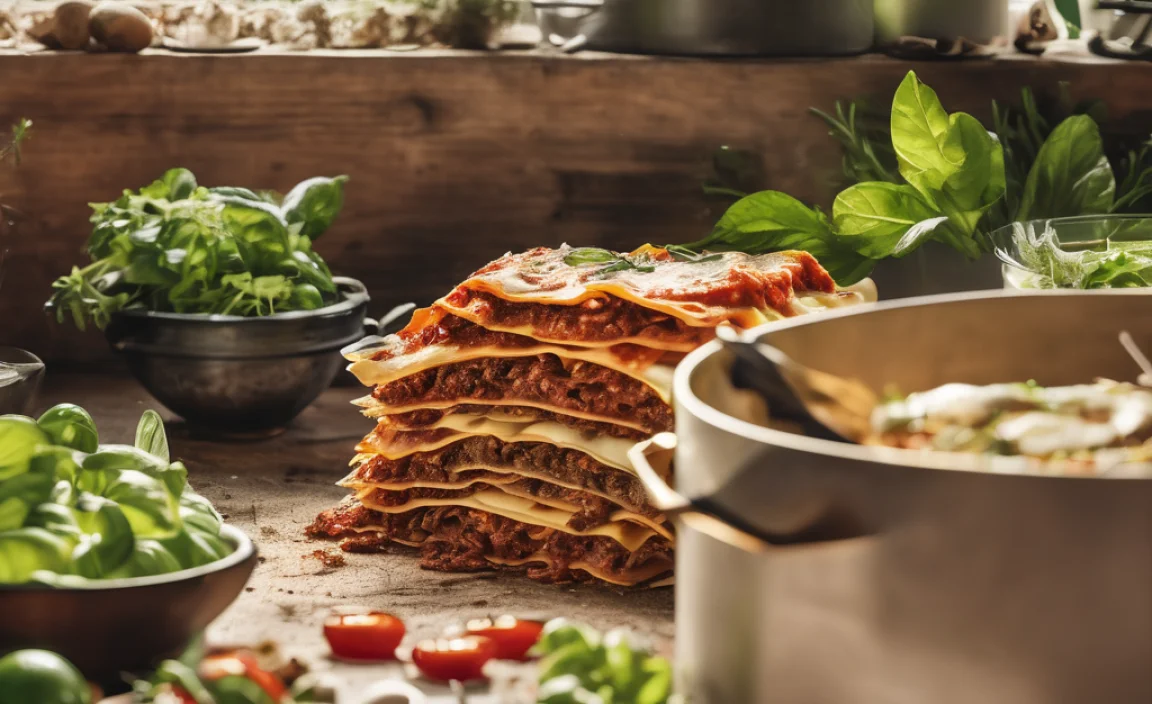
Let’s get this layered compost party started! It’s easier than you think, and the results are incredibly rewarding. We’ll focus on building a new bed for a future garden plot.
Step 1: Choose Your Location
Pick a spot in your yard that gets decent sunlight (or partial shade, depending on what you plan to grow). This will become your new garden bed. You can even start this right on top of your lawn if you want to convert grass into a garden bed over time.
Step 2: Lay The Foundation (The “Cardboard/Newspaper” Layer)
This first layer is crucial. Lay down overlapping sheets of plain cardboard or several layers of newspaper directly on the ground. This smothers any grass or weeds underneath and acts as a base layer. Make sure it’s wet enough to start breaking down.
Step 3: Start Layering – The First “Brown” Layer
Add a thick layer (about 2-4 inches) of your “brown” materials. Think dried leaves, straw, or shredded cardboard. This layer provides carbon and helps with aeration.
Step 4: Add a “Green” Layer
Now, add a thinner layer (about 1-2 inches) of your “green” materials. Kitchen scraps, grass clippings, or coffee grounds work well. This provides nitrogen.
Step 5: Wet It Down
Lightly water each layer as you build. You want the compost to be about as damp as a wrung-out sponge – not soggy, not dry.
Step 6: Continue Layering
Keep alternating layers of browns and greens. A good rule of thumb is to aim for roughly twice as much brown material as green material by volume. For example:
- Newspaper/Cardboard base (wet)
- 2-4 inches of Dried Leaves (Brown)
- 1-2 inches of Kitchen Scraps (Green)
- 1-2 inches of Grass Clippings (Green – use in moderation)
- 2-4 inches of Straw (Brown)
- 1-2 inches of Coffee Grounds/Eggshells (Green)
- Repeat until you have a pile that’s at least 2 feet high.
The thicker the layers, the more insulation your compost pile will have, which helps it heat up and break down faster. Aim for a final height of 2-3 feet if possible.
Step 7: The Topping Off Layer (Browns)
Finish with a generous layer of brown material, like straw or shredded leaves. This helps to keep moisture in, prevent pests, and discourage weed seeds from germinating on the surface.
Step 8: Patience is a Virtue!
Now, you wait! The magic happens underground. Over the next few months (anywhere from 3 months to a year, depending on the materials and weather), the layers will decompose. You can add more layers over time if you have materials available, essentially continuing the lasagna-building process.
If you want to speed things up, you can turn the pile every 4-6 weeks with a garden fork. However, the beauty of lasagna composting is that it works beautifully even if you never turn it. It’s often called “passive” or “no-turn” composting for this reason.
What Can You Compost? A Handy Guide
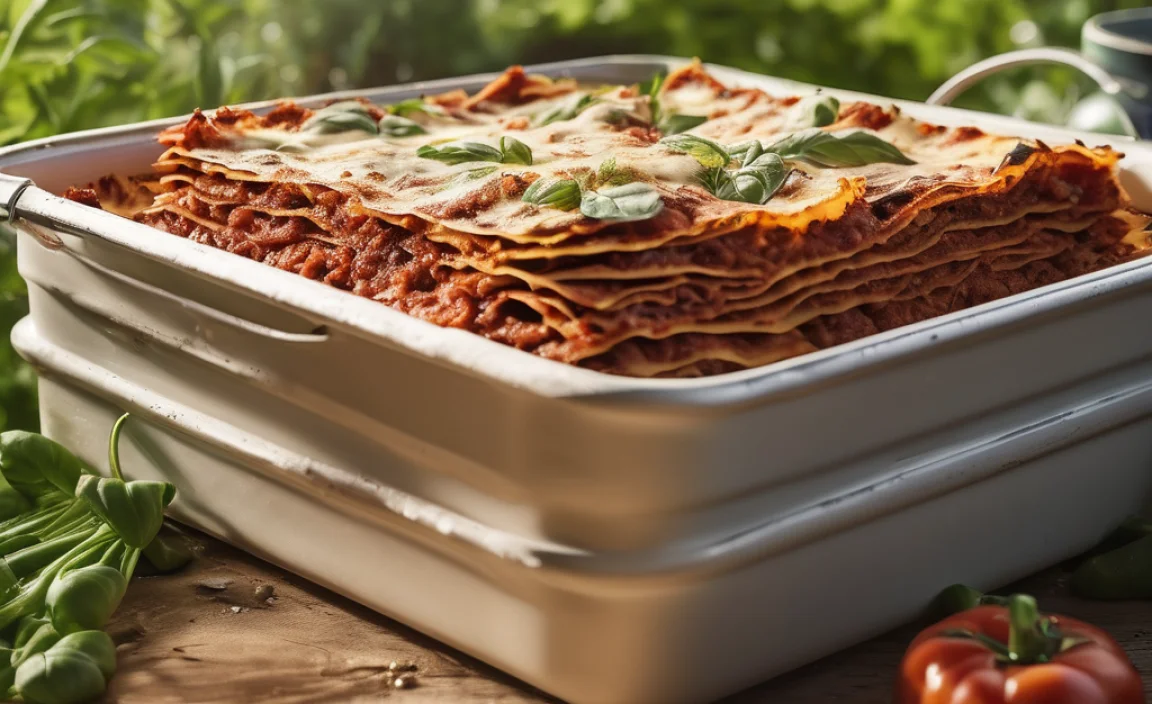
Getting the mix right is key to successful, odorless composting. Here’s a quick reference guide for what to add to your “greens” and “browns” pile.
| “Brown” (Carbon-Rich) Materials | “Green” (Nitrogen-Rich) Materials |
|---|---|
| Dried leaves | Fruit and vegetable scraps |
| Straw and hay | Coffee grounds and paper filters |
| Shredded newspaper (black ink only) | Tea bags (remove staples) |
| Shredded cardboard (plain, no tape) | Grass clippings (thin layers) |
| Sawdust (from untreated wood) | Eggshells (crushed) |
| Wood chips (small amounts) | Plant trimmings (no diseased plants) |
| Pine needles (in moderation) | Manure from herbivores (cow, horse, chicken) |
What NOT to Compost
Some items can cause problems, attract pests, or spread disease. It’s best to keep these out of your compost pile:
- Meat, bones, and dairy products: These attract pests and can smell bad.
- Oily or greasy foods: They can slow down decomposition and create odors.
- Diseased plants or weeds that have gone to seed: You don’t want to spread these in your garden.
- Pet waste (dog or cat feces): Can contain harmful pathogens.
- Chemically treated wood or yard waste: Avoid anything that might have herbicides, pesticides, or treated chemicals.
- Synthetic materials: Plastics, metals, glass.
Troubleshooting Common Lasagna Composting Issues
Even with the easiest methods, sometimes you might run into a snag. Here are a few common issues and how to fix them:
Issue: My compost pile smells bad (like rotten eggs or ammonia).
Cause: Too much “green” material or the pile is too wet and compacted, preventing airflow. This creates an anaerobic (low-oxygen) environment.
Solution: Add more “brown” material. Gently turn the pile to introduce air. Ensure you’re not adding excessive kitchen scraps without balancing them with browns. If it’s very wet, try adding dry leaves or shredded cardboard.
Issue: My compost pile isn’t heating up or breaking down.
Cause: Not enough “green” material, too dry, or the brown materials are too large and woody.
Solution: Add more nitrogen-rich “green” materials like kitchen scraps, grass clippings, or coffee grounds. Water the pile if it’s too dry. Chop or shred larger brown materials into smaller pieces. Turning the pile can also help activate decomposition.
Issue: My compost pile attracts pests (flies, rodents).
Cause: Exposed kitchen scraps, or the presence of meat, dairy, or oily foods.
Solution: Always bury your “green” materials under a layer of “brown” material. Avoid adding meat, dairy, and oily foods. Ensure your pile is moist but not waterlogged, as excessive moisture can attract some pests.
Issue: There are still identifiable food scraps after a long time.
Cause: The pile may be too small, not hot enough, or you’re adding new materials too frequently without allowing older layers to decompose. For this method, it’s naturally slow unless you turn it and keep it hot.
Solution: Be patient! This method is designed to be low-effort. If you want faster results, turn the pile more often to increase aeration and heat. Ensure a good balance of greens and browns. Smaller pieces break down faster, so chop up large food scraps.
When is Lasagna Compost Ready?
Your lasagna compost is ready when it looks and smells like rich, dark soil. You shouldn’t be able to identify any of the original materials you put in. It will be crumbly and earthy. Depending on how diligently you layered and whether you turned it, this can take anywhere from 3 months to a year.
Once it’s ready, you can either plant directly into the new bed (if you built it on top of grass/weeds) or fork it into your existing garden beds to enrich the soil. The beauty is that as it breaks down, it feeds the soil beneath it. If you build a mound, the soil you use for planting will filter down into the compost layers.
The “Affordable” Advantage: Saving Money with Soil
One of the biggest wins with lasagna composting is how much money you save. High-quality compost can be expensive to buy at garden centers. By creating your own using free or low-cost materials, you’re essentially getting nutrient-rich soil amendments for next to nothing.
This isn’t just about saving a few dollars. Healthy soil is the foundation of a productive garden. It improves drainage, retains moisture, and provides essential nutrients for your plants, leading to better yields and healthier harvests. Investing a little time in lasagna composting means investing in your garden’s long-term success, all while being kind to your wallet and the planet.
Beyond the Basics: Tips for Extra-Rich Compost
Want to take your affordable compost to the next level? Here are a few extra tips:
- Chop It Up: Smaller pieces decompose faster. Take a few extra minutes to chop up large kitchen scraps or shred cardboard more finely.
- Balance is Key: While this method naturally helps balance, pay attention to the ratio of browns to greens. If things seem slow, odds are you might need more greens. If it gets funky, add more browns and turn it!
- Water Wisely: The right moisture level is crucial. Too dry, and decomposition stops. Too wet, and it becomes anaerobic and smelly. Check moisture by squeezing a handful – a few drops should come out.
- Consider Worms (Optional): For an even faster breakdown and super-rich compost, you can introduce red wigglers (Eisenia fetida) to your compost pile once it’s established. They are voracious eaters and will significantly speed up decomposition. You can often find starter cultures online or from other gardeners. For more on composting with worms, check out resources like the EPA’s composting guide.
- Don’t Forget Air: While “no-turn” works, occasional aeration helps. If you have the time, turning your pile every month or so with a garden fork will speed up the process.
Conclusion
There you have it! Lasagna composting is a remarkably simple, incredibly affordable, and highly effective way to create fantastic compost for your garden. By layering your brown and green materials, you’re mimicking nature’s own recycling system, turning waste into valuable soil amendments without needing fancy equipment or a big budget.
Remember, the key is balance and patience. Don’t stress too much about perfect ratios – nature is pretty forgiving! Start with what you have, layer it up, keep it moist, and let time do the rest. Your plants will thank you with healthier growth and bountiful harvests. So go ahead, get layering, and unlock those genius garden secrets right in your own backyard!
Frequently Asked Questions (FAQ)
What is the ideal ratio of brown to green materials?
A general guideline is to aim for about a 2:1 or 3:1 ratio of brown (carbon) materials to green (nitrogen) materials by volume. This ensures good airflow and balances the decomposition process.
How long does lasagna composting take?
It can take anywhere from 3 months to a year. The time depends on the size of your pile, the materials used, the weather, and whether you turn it. For a no-turn, passive pile, expect it to take longer.
Can I compost in a small yard or on a balcony?
Yes! While traditional lasagna composting often involves building a large mound, you can adapt it. Use sturdy bins or even large fabric garden bags. Start with a smaller footprint, ensuring you maintain the layers. You might need to chop materials smaller to fit.
What if I only have “green” materials and no “browns” in winter?
Collect and store your brown materials! Save leaves in bags through fall, shred cardboard boxes, or keep straw from garden projects. If you run out, you can buy a bale of straw cheaply from a garden store or feed store.
Is it necessary to turn the compost pile?
No, it’s not strictly necessary for the lasagna composting method, which is why it’s so beginner-friendly and low-effort. Turning it will speed up the decomposition process by introducing oxygen and mixing materials, but it will still break down effectively without turning.
Can I plant directly into a freshly made lasagna bed?
It’s generally best to let the bed “cook” for at least a few months before planting directly into it, especially if you want to use the soil created. If you build the bed on top of grass or weeds, the initial layers need time to break down. You can plant into the top few inches once it’s partially decomposed and looks like soil, but the full benefits come from waiting.
.lwrp.link-whisper-related-posts{
margin-top: 40px;
margin-bottom: 30px;
}
.lwrp .lwrp-title{
}.lwrp .lwrp-description{
}
.lwrp .lwrp-list-container{
}
.lwrp .lwrp-list-multi-container{
display: flex;
}
.lwrp .lwrp-list-double{
width: 48%;
}
.lwrp .lwrp-list-triple{
width: 32%;
}
.lwrp .lwrp-list-row-container{
display: flex;
justify-content: space-between;
}
.lwrp .lwrp-list-row-container .lwrp-list-item{
width: calc(25% – 20px);
}
.lwrp .lwrp-list-item:not(.lwrp-no-posts-message-item){
max-width: 150px;
}
.lwrp .lwrp-list-item img{
max-width: 100%;
height: auto;
object-fit: cover;
aspect-ratio: 1 / 1;
}
.lwrp .lwrp-list-item.lwrp-empty-list-item{
background: initial !important;
}
.lwrp .lwrp-list-item .lwrp-list-link .lwrp-list-link-title-text,
.lwrp .lwrp-list-item .lwrp-list-no-posts-message{
}@media screen and (max-width: 480px) {
.lwrp.link-whisper-related-posts{
}
.lwrp .lwrp-title{
}.lwrp .lwrp-description{
}
.lwrp .lwrp-list-multi-container{
flex-direction: column;
}
.lwrp .lwrp-list-multi-container ul.lwrp-list{
margin-top: 0px;
margin-bottom: 0px;
padding-top: 0px;
padding-bottom: 0px;
}
.lwrp .lwrp-list-double,
.lwrp .lwrp-list-triple{
width: 100%;
}
.lwrp .lwrp-list-row-container{
justify-content: initial;
flex-direction: column;
}
.lwrp .lwrp-list-row-container .lwrp-list-item{
width: 100%;
}
.lwrp .lwrp-list-item:not(.lwrp-no-posts-message-item){
max-width: initial;
}
.lwrp .lwrp-list-item .lwrp-list-link .lwrp-list-link-title-text,
.lwrp .lwrp-list-item .lwrp-list-no-posts-message{
};
}

I am passionate about home engineering. I specialize in designing, installing, and maintaining heating, ventilation, and air conditioning systems. My goal is to help people stay comfortable in their homes all year long.

